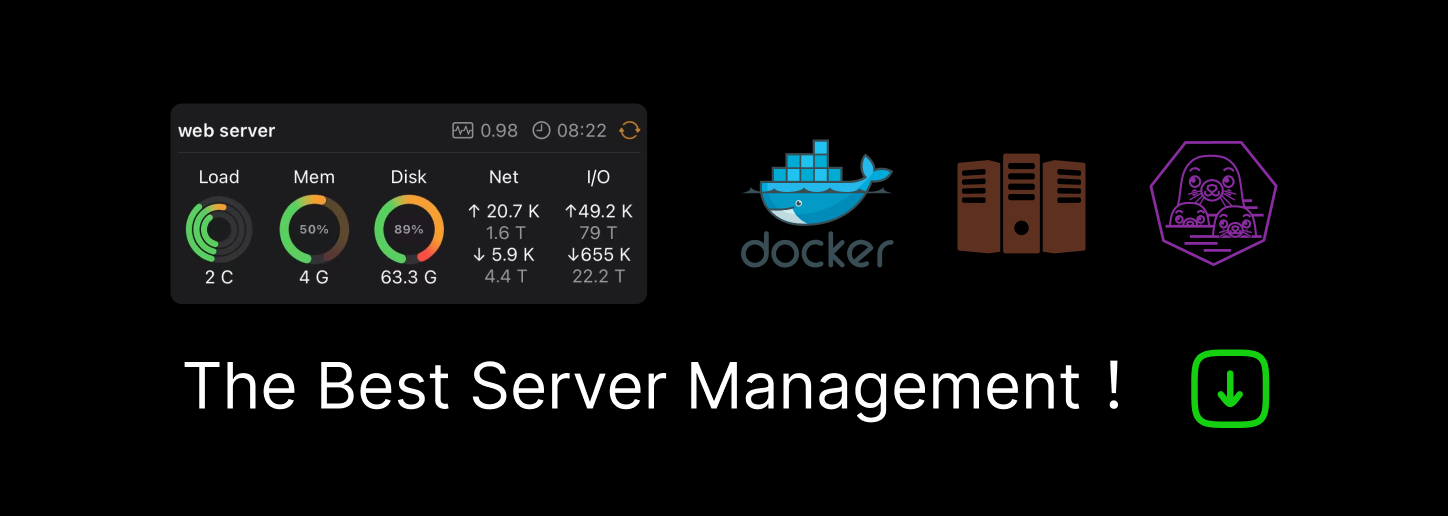

GitHub - flairNLP/flair: A very simple framework for state-of-the-art Natural La...
source link: https://github.com/flairNLP/flair
Go to the source link to view the article. You can view the picture content, updated content and better typesetting reading experience. If the link is broken, please click the button below to view the snapshot at that time.

README.md
A very simple framework for state-of-the-art NLP. Developed by Zalando Research.
Flair is:
-
A powerful NLP library. Flair allows you to apply our state-of-the-art natural language processing (NLP) models to your text, such as named entity recognition (NER), part-of-speech tagging (PoS), sense disambiguation and classification.
-
Multilingual. Thanks to the Flair community, we support a rapidly growing number of languages. We also now include 'one model, many languages' taggers, i.e. single models that predict PoS or NER tags for input text in various languages.
-
A text embedding library. Flair has simple interfaces that allow you to use and combine different word and document embeddings, including our proposed Flair embeddings, BERT embeddings and ELMo embeddings.
-
A PyTorch NLP framework. Our framework builds directly on PyTorch, making it easy to train your own models and experiment with new approaches using Flair embeddings and classes.
Now at version 0.4.4!
Comparison with State-of-the-Art
Flair outperforms the previous best methods on a range of NLP tasks:
Task Language Dataset Flair Previous best Named Entity Recognition English Conll-03 93.18 (F1) 92.22 (Peters et al., 2018) Named Entity Recognition English Ontonotes 89.3 (F1) 86.28 (Chiu et al., 2016) Emerging Entity Detection English WNUT-17 49.49 (F1) 45.55 (Aguilar et al., 2018) Part-of-Speech tagging English WSJ 97.85 97.64 (Choi, 2016) Chunking English Conll-2000 96.72 (F1) 96.36 (Peters et al., 2017) Named Entity Recognition German Conll-03 88.27 (F1) 78.76 (Lample et al., 2016) Named Entity Recognition German Germeval 84.65 (F1) 79.08 (Hänig et al, 2014) Named Entity Recognition Dutch Conll-03 90.44 (F1) 81.74 (Lample et al., 2016) Named Entity Recognition Polish PolEval-2018 86.6 (F1)(Borchmann et al., 2018) 85.1 (PolDeepNer)
Here's how to reproduce these numbers using Flair. You can also find detailed evaluations and discussions in our papers:
-
Contextual String Embeddings for Sequence Labeling. Alan Akbik, Duncan Blythe and Roland Vollgraf. 27th International Conference on Computational Linguistics, COLING 2018.
-
Pooled Contextualized Embeddings for Named Entity Recognition. Alan Akbik, Tanja Bergmann and Roland Vollgraf. 2019 Annual Conference of the North American Chapter of the Association for Computational Linguistics, NAACL 2019.
-
FLAIR: An Easy-to-Use Framework for State-of-the-Art NLP. Alan Akbik, Tanja Bergmann, Duncan Blythe, Kashif Rasul, Stefan Schweter and Roland Vollgraf. 2019 Annual Conference of the North American Chapter of the Association for Computational Linguistics (Demonstrations), NAACL 2019.
Quick Start
Requirements and Installation
The project is based on PyTorch 1.1+ and Python 3.6+, because method signatures and type hints are beautiful. If you do not have Python 3.6, install it first. Here is how for Ubuntu 16.04. Then, in your favorite virtual environment, simply do:
pip install flair
Example Usage
Let's run named entity recognition (NER) over an example sentence. All you need to do is make a Sentence, load
a pre-trained model and use it to predict tags for the sentence:
from flair.data import Sentence from flair.models import SequenceTagger # make a sentence sentence = Sentence('I love Berlin .') # load the NER tagger tagger = SequenceTagger.load('ner') # run NER over sentence tagger.predict(sentence)
Done! The Sentence now has entity annotations. Print the sentence to see what the tagger found.
print(sentence) print('The following NER tags are found:') # iterate over entities and print for entity in sentence.get_spans('ner'): print(entity)
This should print:
Sentence: "I love Berlin ." - 4 Tokens The following NER tags are found: LOC-span [3]: "Berlin"
Tutorials
We provide a set of quick tutorials to get you started with the library:
- Tutorial 1: Basics
- Tutorial 2: Tagging your Text
- Tutorial 3: Embedding Words
- Tutorial 4: List of All Word Embeddings
- Tutorial 5: Embedding Documents
- Tutorial 6: Loading your own Corpus
- Tutorial 7: Training your own Models
- Tutorial 8: Optimizing your Models
- Tutorial 9: Training your own Flair Embeddings
The tutorials explain how the base NLP classes work, how you can load pre-trained models to tag your text, how you can embed your text with different word or document embeddings, and how you can train your own language models, sequence labeling models, and text classification models. Let us know if anything is unclear.
There are also good third-party articles and posts that illustrate how to use Flair:
- How to build a text classifier with Flair
- How to build a microservice with Flair and Flask
- A docker image for Flair
- Great overview of Flair functionality and how to use in Colab
- Visualisation tool for highlighting the extracted entities
- Practical approach of State-of-the-Art Flair in Named Entity Recognition
- Benchmarking NER algorithms
Citing Flair
Please cite the following paper when using Flair:
@inproceedings{akbik2018coling,
title={Contextual String Embeddings for Sequence Labeling},
author={Akbik, Alan and Blythe, Duncan and Vollgraf, Roland},
booktitle = {{COLING} 2018, 27th International Conference on Computational Linguistics},
pages = {1638--1649},
year = {2018}
}
If you use the pooled version of the Flair embeddings (PooledFlairEmbeddings), please cite:
@inproceedings{akbik2019naacl,
title={Pooled Contextualized Embeddings for Named Entity Recognition},
author={Akbik, Alan and Bergmann, Tanja and Vollgraf, Roland},
booktitle = {{NAACL} 2019, 2019 Annual Conference of the North American Chapter of the Association for Computational Linguistics},
pages = {724–728},
year = {2019}
}
Contact
Please email your questions or comments to Alan Akbik.
Contributing
Thanks for your interest in contributing! There are many ways to get involved; start with our contributor guidelines and then check these open issues for specific tasks.
For contributors looking to get deeper into the API we suggest cloning the repository and checking out the unit tests for examples of how to call methods. Nearly all classes and methods are documented, so finding your way around the code should hopefully be easy.
Running unit tests locally
You need Pipenv for this:
pipenv install --dev && pipenv shell
pytest tests/To run integration tests execute:
pytest --runintegration tests/
The integration tests will train small models. Afterwards, the trained model will be loaded for prediction.
To also run slow tests, such as loading and using the embeddings provided by flair, you should execute:
pytest --runslow tests/
Code Style
To ensure a standardized code style we use the formatter black. If your code is not formatted properly, travis will fail to build.
If you want to automatically format your code on every commit, you can use pre-commit.
Just install it via pip install pre-commit and execute pre-commit install in the root folder.
This will add a hook to the repository, which reformats files on every commit.
If you want to set it up manually, install black via pip install black.
To reformat files execute black ..
License
The MIT License (MIT)
Flair is licensed under the following MIT license: The MIT License (MIT) Copyright © 2018 Zalando SE, https://tech.zalando.com
Permission is hereby granted, free of charge, to any person obtaining a copy of this software and associated documentation files (the “Software”), to deal in the Software without restriction, including without limitation the rights to use, copy, modify, merge, publish, distribute, sublicense, and/or sell copies of the Software, and to permit persons to whom the Software is furnished to do so, subject to the following conditions:
The above copyright notice and this permission notice shall be included in all copies or substantial portions of the Software.
THE SOFTWARE IS PROVIDED “AS IS”, WITHOUT WARRANTY OF ANY KIND, EXPRESS OR IMPLIED, INCLUDING BUT NOT LIMITED TO THE WARRANTIES OF MERCHANTABILITY, FITNESS FOR A PARTICULAR PURPOSE AND NONINFRINGEMENT. IN NO EVENT SHALL THE AUTHORS OR COPYRIGHT HOLDERS BE LIABLE FOR ANY CLAIM, DAMAGES OR OTHER LIABILITY, WHETHER IN AN ACTION OF CONTRACT, TORT OR OTHERWISE, ARISING FROM, OUT OF OR IN CONNECTION WITH THE SOFTWARE OR THE USE OR OTHER DEALINGS IN THE SOFTWARE.
Recommend
-
 56
56
README.md Github XP Microsoft + Github = ❤️. Make it official by giving your Github experience some Windows XP flair. ➡️ One-click install from
-
 9
9
The Flair 58 espresso maker is a coffee-lover’s dream machineBetter espresso than most coffee shops, without breaking the bankThe best money I ever spent on coffee was buying myself the original
-
 10
10
WhatsApp is adding some modern flair to contact info pages By Srivatsa Ramesh Published 16 hours ago The new UI is rolling...
-
 11
11
How to send balloons, hearts, and other flair in iMessage
-
 10
10
Near the top of its class — Review: HP’s 13.5-inch Spectre x360 is a top ultralight—with flair Not the top performer, but the Spectre has other wins, like its 3:2 screen.
-
 9
9
Natural-Language-Interpreter Simple implementation of natural language interpreter in Javascript. This is a simple JavaScript tool that allows for multiple types of user prompts to be "funneled in" to a single command. You can set...
-
 10
10
The Forgotten Cadillac Concept Car With An Italian Flair ...
-
 4
4
Fonts Best Whimsical Fonts With Quirky Flair ByBrooke...
-
 10
10
The 1996 Lincoln Sentinel Was A Sleek Concept Car With Retro Flair ...
-
 10
10
Best Fonts Flyer Fla...
About Joyk
Aggregate valuable and interesting links.
Joyk means Joy of geeK
